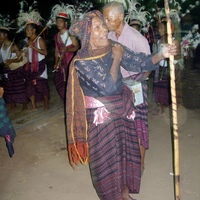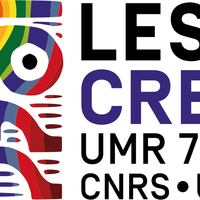(Flores Waiklibang) Mitos Asal Usul Padi (4), Nama Neron, Haman Opak bélun: Gurun Gawak Be'ola Tugu
Item
-
Edited Title
Nama Neron- Haman Opak bélun: Gurun Gawak Be'ola Tugu "Narrative of enveloping and encircling the food of the fields"
-
Archivist's Original Title
id
(Flores Waiklibang) Mitos Asal Usul Padi (4), Nama Neron, Haman Opak bélun: Gurun Gawak Be'ola Tugu
en
(Flores Waiklibang) Sung Myth of The Origin Of Rice (4) Nama Neron
fr
(Flores Waiklibang) Mythe d'Origine du Riz (4) Nama Neron
-
Original description
en
Field recording collected by Dana Rappoport in Eastern Indonesia in 2006 and 2007
id
Rekaman dibuat oleh Dana Rappoport di Indonesia Timur selama satu tahun (2006-2007)
fr
Enregistrements de Dana Rappoport dans l'Est indonésien durant un an (2006-2007)
-
Recording date of the original material
-
Place of the cultural origin
-
Recording place
Flores, Waiklibang, Kec. Tanjung Bunga, Kabupaten Flores Timur
-
Comment
en
Recorded during the Dokan Gurun ritual. The Dokan Gurun ("save, set aside, wrap") rite is done to store the seed in the attic. This seed represents the body of a sacrificed woman. This song also functions on an alternation between reciter (opak) and alternating duet (hode' ana'). The women continue the mythical tale of the origin of rice, of the sacrifice of Nogo Ema by his brother. On this occasion, the myth of the origin of rice is recited all night long, while dancing in front of the Koké temple, between the Maran clan house and the temple. See video, see publications. Transcriptions of the entire myth and translation into Indonesian.
fr
Enregistré pendant le rituel Dokan Gurun. Le chant fonctionne encore sur une alternance entre récitant (opak) et duo alternant (hode' ana'). Les femmes poursuivent le récit mythique de l'origine du riz, du sacrifice de Nogo Ema par son frère. Le rite dokan gurun (« conserver, mettre de côté, envelopper ») est fait pour stocker la semence dans le grenier. Cette semence, c'est le corps d'une femme sacrifiée. A cette occasion, le mythe d'origine du riz est récité toute la nuit, en dansant devant le temple koké, entre la maison clanique Maran et le temple. Voir vidéo, voir publications.
id
Direkam selama ritual Dokan Gurun. Nyanyian ini masih didasarkan pada pembacaan ayat-ayat secara bergantian (opak) dan duet bergantian (hode' ana'). Para wanita melanjutkan kisah mitos tentang asal-usul padi dan pengorbanan Nogo Ema oleh saudaranya. Ritual dokan gurun ("mengawetkan, menyisihkan, membungkus") digunakan untuk menyimpan benih di lumbung padi. Benih ini adalah tubuh seorang wanita yang dikorbankan. Pada kesempatan ini, mitos asal usul padi dibacakan sepanjang malam, sambil menari di depan kuil koké, di antara rumah marga Maran dan kuil. Lihat video, lihat publikasi.
-
Archivist Category
en
Music (Vocal and instrumental)
-
Instrument, Original Archivist Data
Singing voice: female
Bell
-
Instrument (Supplementary/Annotated Data)
-
Name of original Collection
Indonesia : East Flores, Solor, Adonara, Lembata Islands, 2006-2007.
-
Collection source citation
-
History of ownership
Sound recording archived at Musée de l'Homme in 2007 by D. Rappoport
-
Holding Institution of Original Materials
-
Copyright Notice
For any use, please contact the CREM-LESC (CNRS, Nanterre University, France): crem.lesc[at]cnrs.fr ; See information at https://archives.crem-cnrs.fr
-
Preservation State of Physical Object
-
Original item number
CNRSMH_I_2007_006_001_236
-
SEAH Identifier
SEAH_CNRSMH_I_2007_006_001_236
 https://archives.crem-cnrs.fr/archives/items/CNRSMH_I_2007_006_001_236
https://archives.crem-cnrs.fr/archives/items/CNRSMH_I_2007_006_001_236



